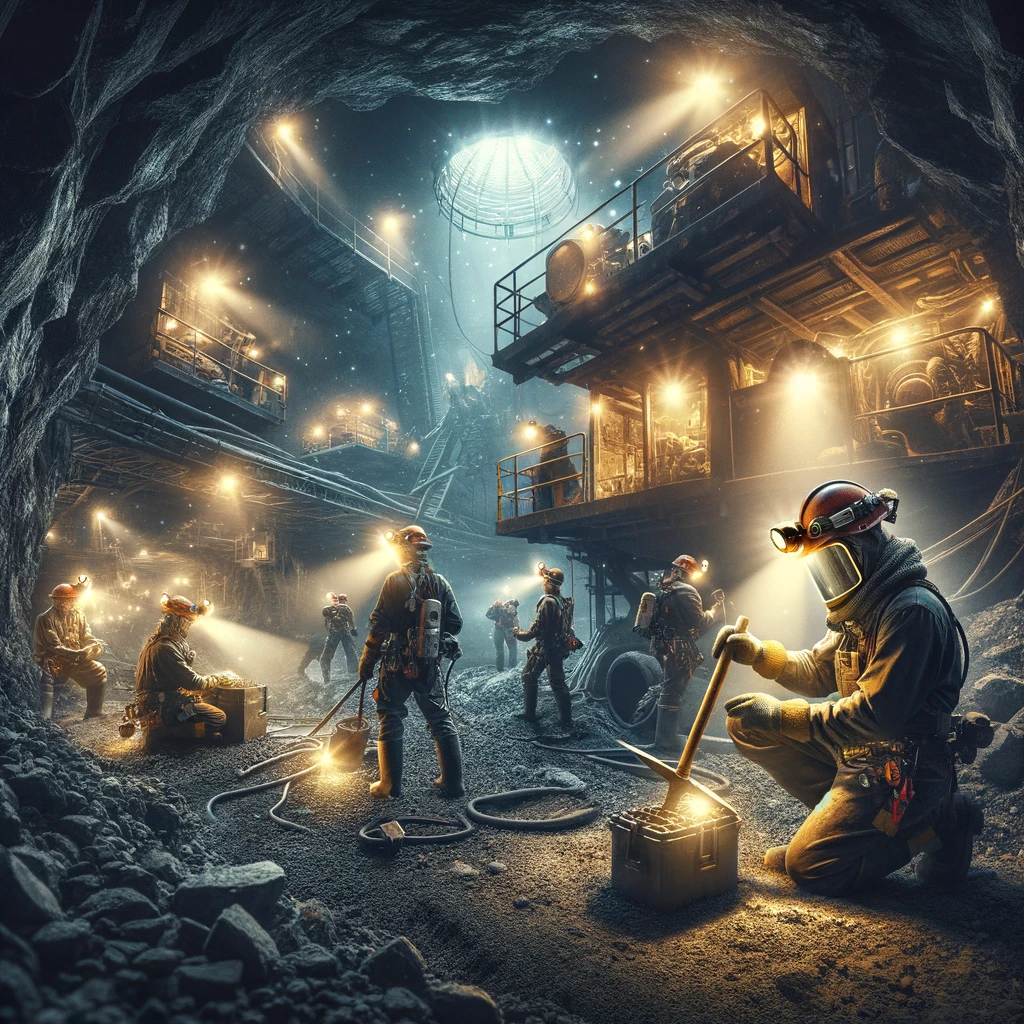In a world where industries often operate amidst flammable gases, combustible dusts, and other hazardous materials, safety is of the utmost importance. A single spark in the wrong place at the wrong time can lead to catastrophic consequences. That’s where LED explosion proof lights come in – a beacon of safety in environments where danger lurks around every corner.
In this illuminating article, we’ll explore the critical role of LED explosion proof lights in mitigating risks, the rigorous standards these fixtures must meet, and how they compare to traditional lighting options. So, let’s dive in and shed some light on this essential topic!
The Importance of Explosion Proof Lighting
When it comes to working in hazardous locations, you can never be too careful. Whether it’s an oil refinery, a chemical plant, or a grain mill, the presence of flammable substances creates an ever-present risk of explosions and fires. And believe it or not, something as seemingly innocuous as lighting can be a significant ignition source.
That’s right – a simple light fixture can spell disaster in the wrong environment. A stray spark from a switch, a shattered bulb, or an overheating ballast can all provide the energy needed to ignite flammable gases or dusts. That’s why explosion proof lighting is so critical – it’s designed to contain any internal explosions, preventing them from spreading to the surrounding atmosphere.
What is the Standard for Explosion Proof Lighting?
So, what exactly makes a light fixture “explosion proof”? It’s not just a marketing buzzword – there are strict standards and classifications that these fixtures must meet to earn that designation.
In the United States, the National Electric Code (NEC) sets the standards for explosion proof lighting. The NEC divides hazardous locations into three classes based on the type of explosive material present:
– Class I: Flammable gases or vapors
– Class II: Combustible dusts
– Class III: Ignitable fibers
Each class is further subdivided into two divisions based on the likelihood of the hazardous material being present:
– Division 1: Material is present continuously, intermittently, or periodically under normal conditions
– Division 2: Material is only present in case of accidental rupture, breakdown, or abnormal operation
To be considered explosion proof, a light fixture must be tested and certified to operate safely in its designated class and division. So, when you see a fixture rated as “Class I Division 1,” you know it’s built to withstand the toughest, most hazardous environments. Read more about Shedding Light on Hazardous Areas: Your Guide to Class 1 Division 1 LED Lighting here.
Are LED Lights Explosion Proof?
Now, you might be wondering – are LED lights inherently explosion proof? The short answer is no. Just because a light uses LED technology doesn’t automatically make it safe for hazardous locations.
However, LEDs do have some unique advantages when it comes to hazardous location lighting. For one, they operate at much lower temperatures than traditional bulbs, reducing the risk of heat-related ignition. They’re also more resistant to vibration and impact, which is crucial in industrial settings.
When properly designed and certified, an LED explosion proof light fixture can provide unparalleled safety, energy efficiency, and longevity. So, while LEDs aren’t explosion proof by default, they can be a superior choice when engineered specifically for hazardous environments.
The Benefits of LED Explosion Proof Lights
Speaking of the advantages of LEDs, let’s take a closer look at why they’re becoming the go-to choice for hazardous location lighting:
1. Energy Efficiency: LEDs use significantly less energy than traditional bulbs, which can translate to huge cost savings over time.
2. Long Lifespan: With a typical lifespan of 50,000+ hours, LED explosion proof lights require less frequent replacement, minimizing maintenance in dangerous areas.
3. Durability: LEDs are solid-state devices, making them more resistant to vibration, impact, and extreme temperatures.
4. Instant On: Unlike some traditional bulbs, LEDs reach full brightness instantly, which can be crucial in emergency situations.
5. Improved Visibility: LEDs provide a crisp, clear light that can improve visibility and safety in hazardous work environments.
With benefits like these, it’s no wonder that more and more facilities are turning to LED explosion proof lights to illuminate their hazardous locations safely and efficiently.
 |
FAQs
Q: Can I use a standard LED bulb in an explosion proof fixture?
A: No, only LED bulbs specifically designed and certified for use in explosion proof fixtures should be used. Standard LED bulbs do not have the necessary safety features. read more about Are LED Bulbs Explosion Proof? Understanding Lighting Safety in Hazardous Environments here.
Q: How do I know if an LED explosion proof light is certified?
A: Look for the fixture’s class and division rating (e.g., Class I Division 1) and certifications from recognized testing laboratories like UL or CSA.
Q: What is the standard for explosion proof lighting in my specific industry?
A: The specific standards may vary depending on your industry and location. Consult the National Electric Code (NEC) and any relevant local codes for the most accurate information.
Wrapping Up
In industries where hazardous materials are a daily reality, explosion proof lighting isn’t just a luxury – it’s a necessity. And with the advent of LED technology, facilities can now illuminate their dangerous environments with an unparalleled combination of safety, efficiency, and reliability.
By understanding the rigorous standards for explosion proof lighting, the unique benefits of LEDs, and the importance of proper certification, you can make informed decisions to mitigate dangers and protect your workers, your facility, and your community.
So, don’t let a spark turn into a catastrophe. Invest in LED explosion proof lights and experience the peace of mind that comes from knowing you’re prioritizing safety above all else.
[gravityform id=”1″ title=”true” description=”true”]
